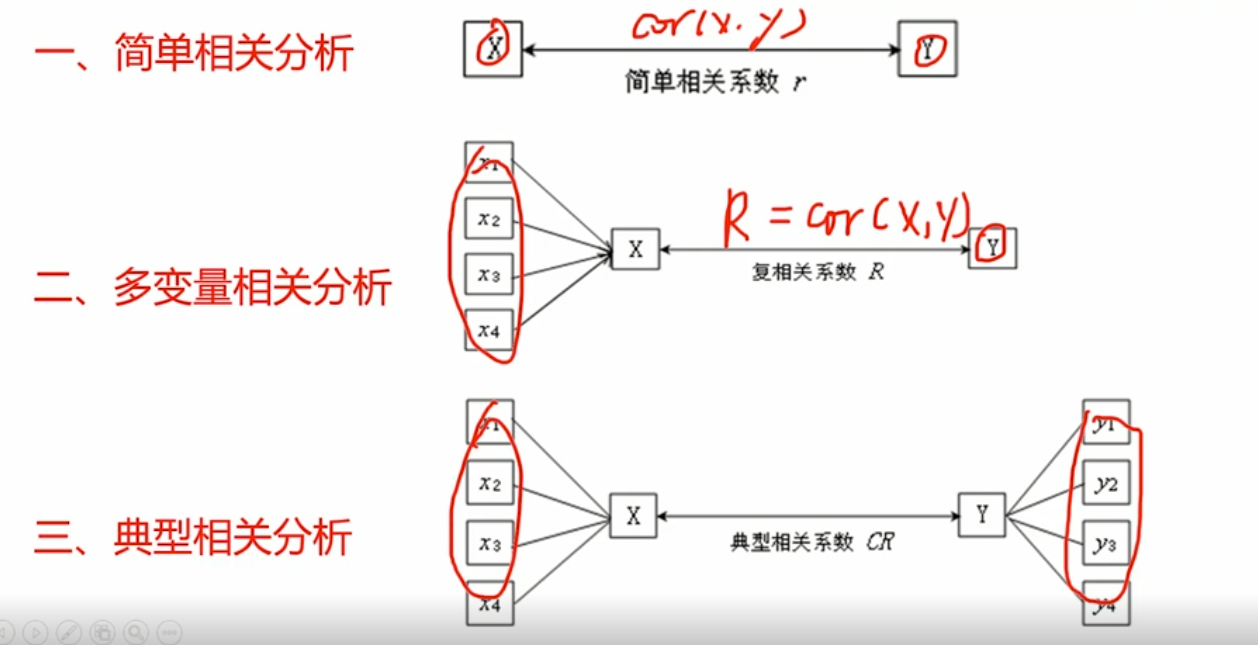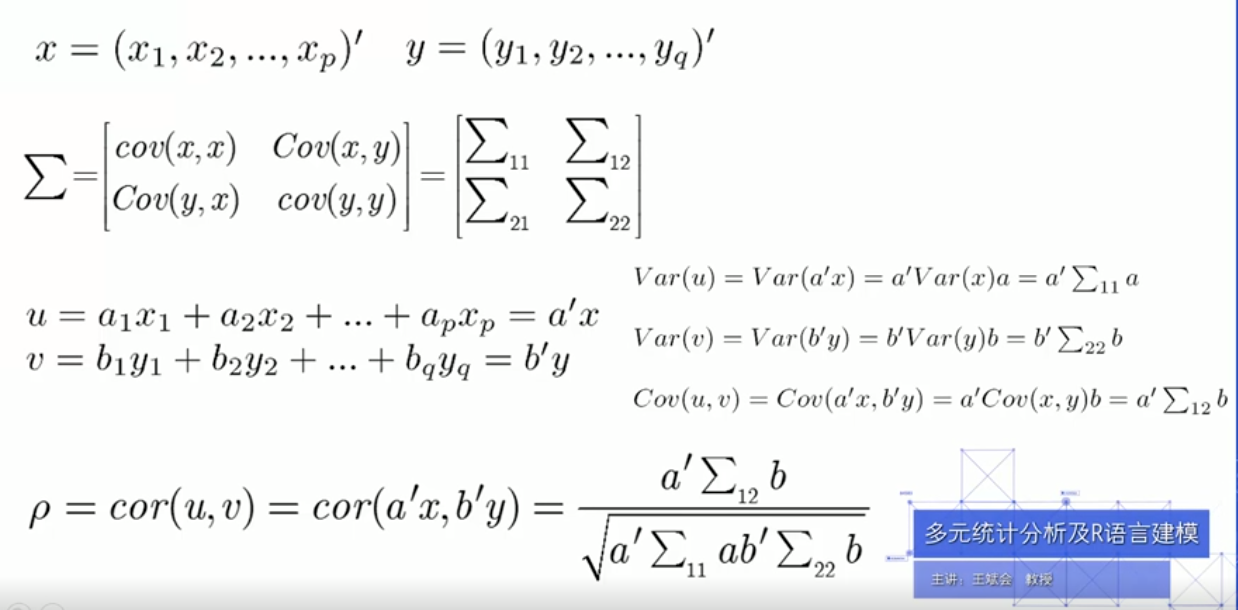- Concept: To explore the correlation between one set of variables and another (Canonical Correlation Analysis) is an extension of simple correlation and multivariate correlation

- Compress parameters into a variable
- Parameter limit: standardize the transformation so that the covariance is 1
- Lagrange expansion
- Seeking the extreme value of derivation
- Get characteristic equation

- Properties of typical variables
- Test of correlation of typical variables: test the typical correlation coefficient to determine the number of correlation coefficients, and then analyze the typical correlation of data according to the significant typical correlation coefficient
d11.1=read.table('clipboard',header = T) #Simple correlation analysis cor(d11.1) #Multivariate correlation analysis summary(lm(y1~x1+x2+x3,d11.1))$r.sq summary(lm(y2~x1+x2+x3,d11.1))$r.sq summary(lm(y3~x1+x2+x3,d11.1))$r.sq #canonical correlation analysis d11.2=read.table('clipboard',header = T) ca=cancor(d11.1[,1:3],d11.1[,4:6]) ca$cor #Canonical variables ca$xcoef ca$ycoef msa.cancor(d11.1[,1:3],d11.1[,4:6],plot = TRUE) msa.cancor(d11.2[,1:4],d11.2[,5:10],plot = TRUE,pq=2) msa.cancor<-function (x, y, pq=min(ncol(x),ncol(y)), plot = FALSE){ x = scale(x) y = scale(y) n = nrow(x) p = ncol(x) q = ncol(y) ca = cancor(x, y) #cat("\n"); print(ca) r = ca$cor m <- length(r) Q <- rep(0, m) P = rep(0, m) lambda <- 1 for (k in m:1) { lambda <- lambda * (1 - r[k]^2) Q[k] <- -log(lambda) } s <- 0 i <- m for (k in 1:m) { Q[k] <- (n - k + 1 - 1/2 * (p + q + 3) + s) * Q[k] P[k] <- 1 - pchisq(Q[k], (p - k + 1) * (q - k + 1)) } #cat("\n cancor test: \n") #print(round(data.frame(r, Q, P),4)) cr=round(data.frame(CR=r, Q, P),4) cat("\n") u=as.data.frame(ca$xcoef[,1:pq]); colnames(u)=paste('u',1:pq,sep='') #print(round(u,4)) v=as.data.frame(ca$ycoef[,1:pq]); colnames(v)=paste('v',1:pq,sep='') #print(round(v,4)) if (plot) { u1 = as.matrix(x) %*% u[,1] v1 = as.matrix(y) %*% v[,1] plot(u1, v1, xlab = "u1", ylab = "v1") abline(lm(u1 ~ v1)) } list(cor=cr,xcoef=t(round(u,4)),ycoef=t(round(v,4))) }